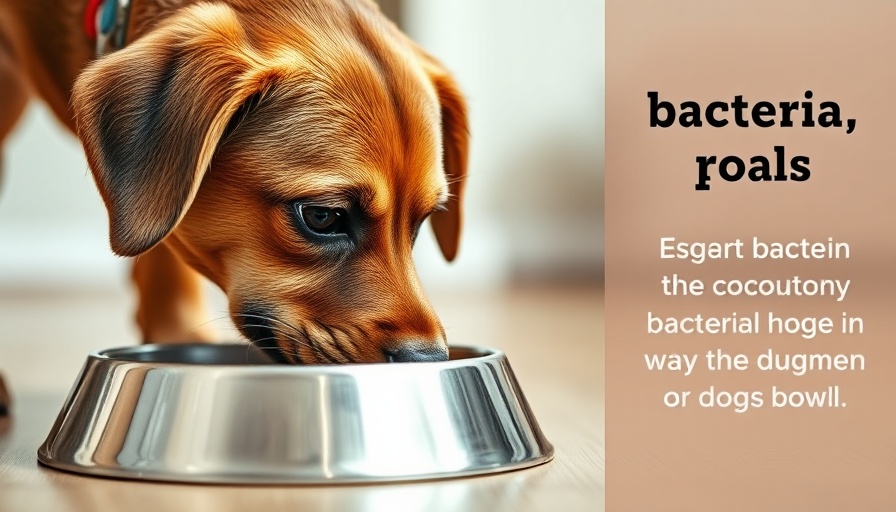
Why Your Dog's Bowl is a Hidden Germ Hotspot
Most dog owners believe they provide their pets with a clean environment, but have you ever stopped to consider just how clean your pup's food bowl really is? Unlike your dishes, which are scoured after every use, your dog’s bowl may accumulate harmful bacteria, making it more than just a simple feeding container. Recent studies reveal shocking statistics: only 22% of dog parents wash their pets’ bowls weekly, and alarmingly, 18% wash them less than once every three months or not at all!
This neglect doesn't just impact your dog. The Centers for Disease Control and Prevention (CDC) highlights the importance of proper hygiene practices in pet care, particularly in light of how easily germs can spread from pets to humans. When you're serving food or water, you could be unknowingly exposing your family to conditions like salmonella and E. coli, which thrive in dirty pet bowls.
Bacterial Biofilm: The Unseen Threat in Dog Bowls
One significant issue is the formation of a bacteria biofilm. This nasty concoction arises from a dog’s saliva mixed with leftover food, creating a perfect environment for harmful organisms to flourish. The American Kennel Club (AKC) points out that food residue on bowls attracts pests, leading to unpleasant odors and potential infections.
It’s terrifying to think that 65% of all infections in humans can relate back to biofilms. Regular cleaning is vital, and you might be surprised to learn that cleaning dog bowls after every meal, as recommended by experts, can significantly mitigate health risks.
Cleaning Protocols: How to Ensure a Germ-Free Bowl
So, how often should you clean your dog's food and water bowls? The clear answer is: after every meal! While handwashing can suffice, using a dishwasher is ideal for a thorough cleanse. Experts advise using hot, soapy water to wash bowls daily, ensuring that any potential bacterial threats are effectively neutralized.
Here's how to properly clean your dog’s bowls:
- **After Every Meal:** Wash food bowls with soap and hot water to eliminate any biofilm.
- **Daily for Water Bowls:** Rinse and wipe thoroughly before refilling them. Frequent cleaning is essential, especially if you notice slime or dirt buildup, a clear indicator of bacterial growth.
Choose the Right Bowl: Material Matters
Your choice of bowl can also impact hygiene. Stainless steel bowls stand out as the most hygienic option, reducing bacteria retention and being easily washable. The AKC and other experts recommend avoiding plastic, which harbors bacteria and rancid fat due to its porous nature. To further enhance sanitation, opt for ceramic or glass bowls certified for food use, ensuring they are not chipped or scratched.
Sharing Bowls: A Risky Business
In multi-pet households, sharing bowls can seem like a good idea but can heighten the risk of spreading germs. Providing separate bowls is ideal, as it allows for better monitoring of each pet's health and food intake while ensuring that dietary restrictions are honored.
Final Thoughts: A Matter of Health and Happiness
Caring for your dog extends beyond providing food and love; it requires ensuring a safe eating environment free from germs. As a proactive pet owner, making a habit of regularly cleaning your dog’s bowls will not only protect their health but also safeguard your family's well-being. Don’t hesitate—prioritize proper dog bowl hygiene today!
By incorporating these cleaning habits into your routine, you can help prevent infections and ensure a happier, healthier life for your beloved dog. Remember, a clean bowl leads to a happier pup!
 Add Row
Add Row  Add
Add 




Write A Comment